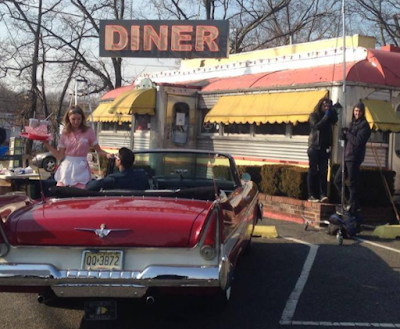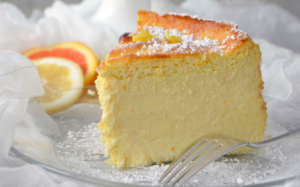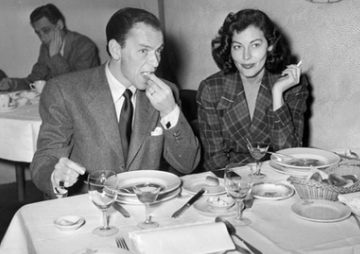Tuesday, July 27, 2021
Old Jersey Diners
Sitting in his family’s tavern in Bayonne early in 1912, Jerry O’Mahony had an epiphany. He and his younger brother, Daniel, owned several lunch wagons. Towed by horses to choice locations throughout Hudson County, the lunch wagons were doing good business. But it occurred to O’Mahony that the real money might be in designing and building the wagons, not operating them.
Determined to test the hypothesis, the two brothers and a family friend, a master carpenter named John Hanf, built a lunch wagon in the backyard of the O’Mahony home at 7 East 16th Street in Bayonne.
A Jersey City restaurant entrepreneur, Michael Griffin, purchased the first O’Mahony wagon for $800. A contract, dated July 3, 1912, stated the wagon would operate in West Hoboken (today’s Union City), in the vicinity of Paterson Plank Road and Summit Avenue. Three trolley lines intersected near the proposed location. There would be plenty of foot traffic.The transaction helped set in motion New Jersey’s golden age of diner manufacturing, which in turn made the Garden State the diner capital of the world.
In the decades that followed Jerry O’Mahony’s flash of inspiration, nearly all the major U.S. diner builders—including Jerry O’Mahony Inc.—set up shop in New Jersey, producing the factory-built, stainless-steel eateries still admired worldwide. The early diners turned out by O’Mahony and others were gems of American industrial design; often, they resembled gleaming railroad cars. They remain prime examples of Streamline Moderne architecture, a concept emphasizing sleek lines and aerodynamic forms.
The diners reflected the American Machine Age, a period between the two world wars that saw an explosion of innovation and technology. The diner, in essence, became the machine that fed travelers, factory workers, truck drivers and middle-class American families. They emphasized fresh, homemade food and friendly service at an affordable price.
“Diners are more American than apple pie,” says Paterson native Herbert Enyart, whose career as a diner manufacturer began in 1952 at the Paterson Vehicle Company’s Silk City Diner division.
The mobile lunch wagon—like those the O’Mahonys owned—actually debuted in 1872 on the streets of Providence, Rhode Island. But the diner business found fertile ground in New Jersey, thanks to the state’s population density and superior infrastructure. Diners became an integral part of New Jersey’s culture, commerce, mythology and roadside landscape. (Today’s popular food trucks also descend from lunch wagons, carrying on the mobile-meal tradition.)
Robert Kullman, the one-time president and chief executive officer of Kullman Dining Car Company, which his grandfather established in Newark in 1927, describes diners as “community restaurants—places where anyone could gather, feel relaxed and enjoy good food at a fair price.” The best diners, he says, became fixtures in their communities. “That’s what gave diners a special place in New Jersey.”
Garden State diner builders churned out hundreds of neon and stainless-steel eateries from the 1930s to the 1950s. On September 23, 1951, the New York Times estimated there were 6,000 diners in the United States, most of them east of the Mississippi River. The diners served 2.4 million customers each day.
Garden State masterpieces of the era that remain standing today include the Summit Diner, built in 1938 by Jerry O’Mahony Inc. of Elizabeth, and Bendix Diner in Hasbrouck Heights, installed by Pequannock-based Master Diners, circa 1947. Vintage diners like these are modular, prefabricated, fully equipped eateries, built in a factory, then transported and assembled on location.
Other Jersey manufacturers of that golden age included Fodero Dining Car Company (Bloomfield); Mountain View Diner Company (Singac/Little Falls); Swingle Diner Manufacturing Inc. (Middlesex); Paramount Dining Car Company (Haledon); and Manno Dining Car Company (Fairfield).
Alas, tastes change. By the late 1950s, the diner business began to slump. The Northeast market was saturated, and the anticipated Western markets never took off. People in the Midwest preferred drive-ins and fast-food restaurants. Soon, fast-food chains moved eastward and elbowed their way into choice locations, often competing with family-owned diners.
Adjusting to the new reality, diner owners in the 1960s and 1970s opted for bigger structures more akin to restaurants. Kitchens were hidden away, and significantly more seating was added for customers. Such structures had to be built on-site; the factory-built diner was becoming a dinosaur.
Diner aesthetics were changing, too. “In the early 1960s, municipalities didn’t want diners,” says Kullman. Zoning boards, he explains, objected to the stainless-steel, truck-stop image of the classic diners. “They didn’t even want the word diner in the sign.”
As a result, Kullman’s parents, Harold and Betty, created what they called the colonial look, substituting wood-and-brick exteriors for the stainless-steel facades. Interiors got a warmer, family-friendly look, with wood paneling, hanging light fixtures, smaller counters, and larger booths and tables. Words like restaurant and grill replaced diner in the signage.
As tastes continued to change in the 1960s and ’70s, Kullman rolled out the “Mediterranean” design, with white stone exteriors and red tile roofs. More recently, diner design has gone retro, with renewed interest in the classic stainless-steel look.
The Kullman company, which moved from Newark to Lebanon in Hunterdon County, created an estimated 1,500 eateries over eight decades, producing everything from early lunch wagons to the sprawling, stainless-steel Tick Tock Diner in Clifton, factory built (in seven sections) in 1994. Robert Kullman’s sale of the company in February 2006 marked the end of factory-made diners in New Jersey.
Today, the Garden State has about 600 diners, including factory-built eateries, site-built structures and storefront businesses. It’s hard to tell anymore what constitutes a diner.
Richard J.S. Gutman, whose 1979 book American Diner is considered the first history of the industry, warns not to be “rigid” when defining a diner. He weighs architectural significance as well as intangibles: quality of food and service; affordability; camaraderie between customers and staff; the cozy, compact interior atmosphere; and whether the eatery has a meaningful place in the community it serves.
“The diner has always been this place where people get together to share ideas,” says Gutman. “It’s this everyday, overlooked culture that makes the world go ’round. Diners have evolved architecturally, and menus have changed, but they’ve always been places where people like to go. It’s part of a diner’s mystique. It’s something that goes beyond food.”
So is New Jersey still the diner capital of the world? “Absolutely,” declares Gutman. “Without a doubt.”

Rosie’s Farmland Diner in Little Ferry became world famous in 1973 when it was the location for a Bounty paper towel commercial “the quicker picker upper” featuring actress Nancy Walker as the namesake of the diner.
The owner changed the name of the diner to capitalize on the fame. However, fame was fleeting and the diner closed for good in 1990.
322 Westside Avenue
at the corner of Culver Avenue and Greenville
New Jersey is said to have approximately 625 diners, more than any other state, and Jersey City has had its share: The Miss America Diner, White Mana Diner, Al’s Diner, Colonette Diner, Flamingo Restaurant, and VIP Diner. The Newark Avenue Diner (a Sterling Diner), at 361 Newark Avenue, was used in the movie Wise Guys and called the "Turnpike Diner." The Tunnel Diner (a Paramount Diner, ca. 1940) at 184 – 14th Street, Boyle Plaza, near the Holland Tunnel, was used for the movie City Hall in 1976.
In 1872, Walter Scott of Rhode Island began the phenomenon of the fast-food eateries when he started a lunch wagon for workers in Providence. The popular lunch wagons soon evolved into stationary eateries that offered 24-hour service in the 1910s. The diners of the 1930s and 1940s displayed an art deco design and the use of stainless steel, tile, and glass for the exterior; Formica paneling, counters and stools, booths with jukeboxes, and tables with napkin dispensers and ketchup became synonymous with the interiors of the diners.
The Miss America Diner is an example of the "Streamline" style of diner manufactured by Jerry O'Mahony during the 1940s. According to James P. Johnson, "In 1913, Bayonne's Jerry O'Mahony [1890-1969] noticed the resemblance between the local roadside lunch wagons and the railroad dining cars and coined the word diner" (113). His production of former trolleys or electric streetcars into restaurants, Johnson remarks, began in a local garage: "O'Mahony kept the wheels on his diners so they could both avoid building codes and change locations. . . . [He also] encouraged his buyers to leave the doors propped open to attract those who dreaded the male-dominated atmosphere. By the 1920s, O'Mahony and others added tables and booths to attract the fairer sex" (113-114). He moved his business to Elizabeth, NJ, and manufactured hundreds of diners there until 1956.
The Miss America Diner is "the best diner in New Jersey . . . . There’s no first runner-up either," writes Peter Genovese, author of several works on roadside architecture (New Jersey Curiosities 32). In many respects, it meets the criteria for diners of the "golden age" in the 1940s as defined by Genovese: "Diners were long, low, 'fluid looking' structures with no hard edges, all corners were rounded. One design trade of this time: the generous use of reflective surfaces" (Jersey Diners 25).
With its classic-looking design and décor, the Miss America Diner has been the setting for several television commercials, including promotional campaigns for Cherry Seven-Up and Tums. The interior of the original section of the diner retains most of its original features such as the white Formica-paneled recessed ceiling with peach trim, peach patterned terrazzo floor, gray Formica counter, stools, tables, and lighting. The peach booths and wood blinds have been replaced and the jukeboxes and soda dispenser removed. Over the years, the favorite food choices of customers who call the Miss America "the Old-Fashioned Diner with the Home-Style Cooking" have been said to be its breakfast specials, meatloaf, and chocolate cream pie.
According to waitress Marilyn Borelli, a more than thirty-year veteran at the popular eatery, the diner dates back to 1942. It was originally called the Joe Cherico Diner for the owner. When Fritz Welte, a German immigrant, bought the diner from Cherico, he renamed it the Miss America Diner to honor his adopted home. A nephew, Alfred Welte, and his wife Helga Welte, later purchased the diner from Fritz. According to Mrs. Borelli, the diner was then sold to three individuals of Greek ancestry (Andy, Peter and Tony). Tom Carlis became the diner's next owner until he retired in 2002. In the early 1990s, Carlis and his co-owner Sam Galatis expanded the stainless steel diner with a 40-seat dining room decorated in blue Formica.
The next owner of the diner was Miquel and Monica Figueroa. In 2005, it was purchased by Christos Stamatis, the former owner of Constantine's Restaurant in nearby Bayonne. Since 2014, Tony Margetis has become the owner of the local landmark. Margetis is the former owner of the Colonette on Rt. 440 in Jersey City
The New Jersey City University campus now extends from Kennedy Boulevard to the corner of Westside and Culver avenues where the Miss America is located. The diner, in fact, is surrounded by the right angle of the university's Athletic and Fitness Center, and serves members of the university community among its patrons.
Monday, July 26, 2021
Best Sub Sandwiches America Submarine
SINATRA CHEESECAKE RECIPE
RECIPE
Ingredients :
- 3 lbs. whole milk fresh Ricotta
- 1 tablespoon butter, softened
- ¼ cup grated Graham Crackers
- 1 teaspoon plus 1½ cups sugar
- 1 cup Mascarpone
- 6 large eggs
- 2 teaspoons vanilla extract
- 2 teaspoons grated lemon zest
- 2 teaspoons fresh lemon juice
INSTRUCTIONS
- Place ricotta in a sieve over a bowl and let drain for 1 hour.
- Triple wrap the bottom and sides of 3×10-inch springform pan with aluminum foil. Butter the sides, bottom and rim of pan. Mix the smashed Graham Crackers with 1 teaspoon sugar and coat the pan.
- Preheat the oven to 350ºF. Fill a teapot with water and bring to a boil. Place the Mascarpone in the bowl of an electric mixer and beat until light. Transfer to a small bowl; then add ricotta and lemon zest to bowl of electric mixer. Beat at low speed until smooth. Beat in the eggs one at a time until smooth. Beat in the remaining 1½ cups sugar. Continue to beat until mixture is very smooth. Beat in the Mascarpone, vanilla and lemon juice. Pour into the pan and smooth the top.
- Place the pan inside a roasting pan whose sides are not higher than the cake pan. Open oven and pull rack out halfway — make sure it’s stable. Place pan on rack, then pour in the boiling water from the teapot into the larger pan to within 1 inch of the top of the smaller pan. Bake for one hour and 15 minutes. Test with finger — the top should spring back a bit. Give the pan a shake — if the batter ripples under the surface too much, it probably needs more time. It should be slightly golden on top. Note: Cooking times will vary dramatically depending on your oven, the pan you are using for the water bath and what type of fresh ricotta you are using. Start checking at 1 hour and 15 minutes. If you have a Thermapen (highly recommend!), use it to test the temp of the cheesecake, and remove the cheesecake when the thermometer reads 150-155ºF.
- Remove and let cool to room temperature in the water bath. Refrigerate overnight or for at least 4 hours before serving. It will firm up as it rests.
- To unmold, slide a thin knife around the cake edges. Release the sides of the springform pan. Refrigerate until serving.
Saturday, July 24, 2021
Portillo Hot Dogs Chicago
Sunday, July 18, 2021
NO MAYO Potato Salad Recipes
- 3 pounds red new potatoes
- ¼ cup red wine vinegar
- 3 tablespoons whole grain Dijon Mustard
- ½ cup olive oil
- 6 scallions, chopped
- ½ cup chopped parsley
- ¼ cup chopped dill
- Salt and ground Black Pepper
- Place the potatoes in a large pot, and cover with water and add 1 tablespoon of Salt. Bring to a boil, and cook until the potatoes are tender, about 20 minutes. Drain and allow to cool. When cool, cut the potatoes in half.
- Combine the vinegar and mustard in a large bowl. Slowly whisk in the olive oil.
- Add the potatoes to the vinaigrette, and mix gently but thoroughly. Toss in the scallions, parsley and dill. Add Salt and Black Pepper to taste.


























